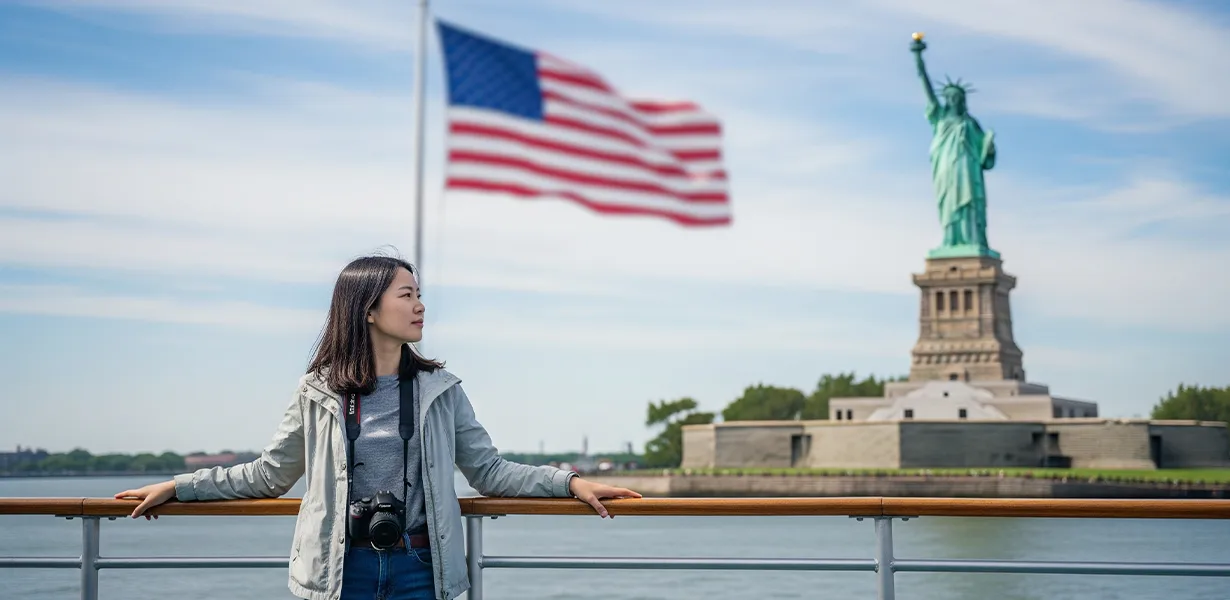Us visitor visa
The United States welcomes millions of visitors each year for tourism, leisure, and family visits. For most travelers, the document that makes this possible is the B-2 tourist visa. This guide explains what the B-2 visa is, who needs it, how to apply, how long you can stay, common reasons for refusals, and practical tips to improve your chances of success.
Get started today with our Immigration Evaluation Form to assess your eligibility and begin the process of securing your us visitor visa.
What Is the B-2 Tourist Visa?
The B-2 visa is a non-immigrant visa intended for short stays in the U.S. for personal and recreational purposes. It does not provide work authorization or a path to permanent residency. While the B-1 category covers short-term business visits (meetings, conferences), the B-2 category is for tourism and personal travel. Some travelers receive a combined B-1/B-2 visa if their trip includes both business and leisure activities.
Who Needs a U.S. Tourist Visa?
Travelers from countries in the Visa Waiver Program (VWP) may visit the U.S. for up to 90 days without a visa, if they obtain an ESTA authorization before travel. Everyone else must apply for a B-2 visa at a U.S. embassy or consulate. Examples include citizens of countries not in the VWP and travelers who do not qualify for ESTA for any reason (such as prior overstays or specific travel histories).

What You Can Do on a B-2 Visa
- Tourism and leisure: sightseeing, cultural activities, national parks, museums.
- Visiting family or friends: attending weddings, birthdays, and family gatherings.
- Medical treatment: receiving care or consultations in the U.S.
- Social events: community or charitable functions.
- Short recreational courses: non-credit classes like cooking or art workshops.
Not allowed: working (paid or unpaid), studying for academic credit, or staying long term beyond the authorized period.
How to Apply for a B-2 Visa
Step 1: Complete the DS-160
Fill out the DS-160 online application with accurate personal, travel, and security information. After submitting, save and print the confirmation page with the barcode to bring to your interview.
Step 2: Pay the Visa Fee
The standard application fee is US$185 (non-refundable). Depending on nationality, there may be additional reciprocity fees if the visa is approved.
Step 3: Schedule Your Interview
Applicants typically aged 14 to 79 must attend an in-person interview at a U.S. embassy or consulate. Due to demand, interview wait times can be lengthy, so book as early as possible.
Step 4: Prepare Your Documents
Bring the required items to your interview, such as:
- Valid passport (generally six months’ validity beyond your intended stay).
- DS-160 confirmation page and fee receipt.
- Passport-style photo meeting U.S. specifications (if not uploaded successfully online).
- Evidence of financial ability (bank statements, pay slips, sponsor letters).
- Proof of ties to your home country (employment letters, property documents, family obligations).
- Travel plan details (itinerary, purpose of trip, estimated dates).
Step 5: Attend the Interview
A consular officer will ask about your travel purpose, funding, and reasons to return home. Be honest, concise, and consistent with your DS-160. A decision may be made the same day or after additional processing.
Duration of Stay and Entry
Even with a valid visa, final admission and the authorized length of stay are determined by the U.S. Customs and Border Protection (CBP) officer at the port of entry. B-2 visitors are commonly admitted for up to six months per entry, noted on your electronic I-94 record.
Extending Your Stay
If you need more time, you may request an extension by filing Form I-539 with USCIS before your current I-94 expires. You must show:
- A valid reason (e.g., ongoing medical treatment or unforeseen circumstances).
- Proof of financial support during the extended stay.
- Compliance with all visa conditions and a continued intent to return home.
Approval is discretionary; overstaying without an approved extension can lead to serious immigration consequences.
Common Reasons for Visa Denial
- Insufficient ties to home country: weak evidence of stable employment, family, or property.
- Inadequate funds: inability to show you can cover travel and living costs.
- Inconsistent information: contradictions between DS-160, documents, and interview answers.
- Immigration history issues: prior overstays or visa violations.
To reduce risk, present clear, consistent documentation and be prepared to explain your itinerary, budget, and reasons for returning home on time.
Practical Tips for a Strong Application
- Be truthful and consistent: accuracy builds credibility.
- Organize documents: bring only relevant, easy-to-read evidence.
- Know your plan: be ready to discuss where you’ll go, where you’ll stay, and how you’ll pay.
- Show ties: employment letters, proof of studies, family responsibilities, or property ownership help.
- Practice common questions: purpose of travel, duration, funding, and previous international travel.
Rights and Limitations of B-2 Visitors
While in the U.S., B-2 visitors may travel domestically, enjoy tourism, and take short recreational courses. They may not work, study for credit, or engage in any activity inconsistent with tourist status. Violations can result in removal, visa cancellations, and future entry bans.
Final Thoughts
The B-2 tourist visa is a practical option for short-term visits to the United States—whether for sightseeing, family time, or medical care. By preparing the DS-160 carefully, organizing documents, demonstrating strong ties to your home country, and answering interview questions honestly, you can significantly improve your chances of approval and enjoy a smooth, memorable trip.